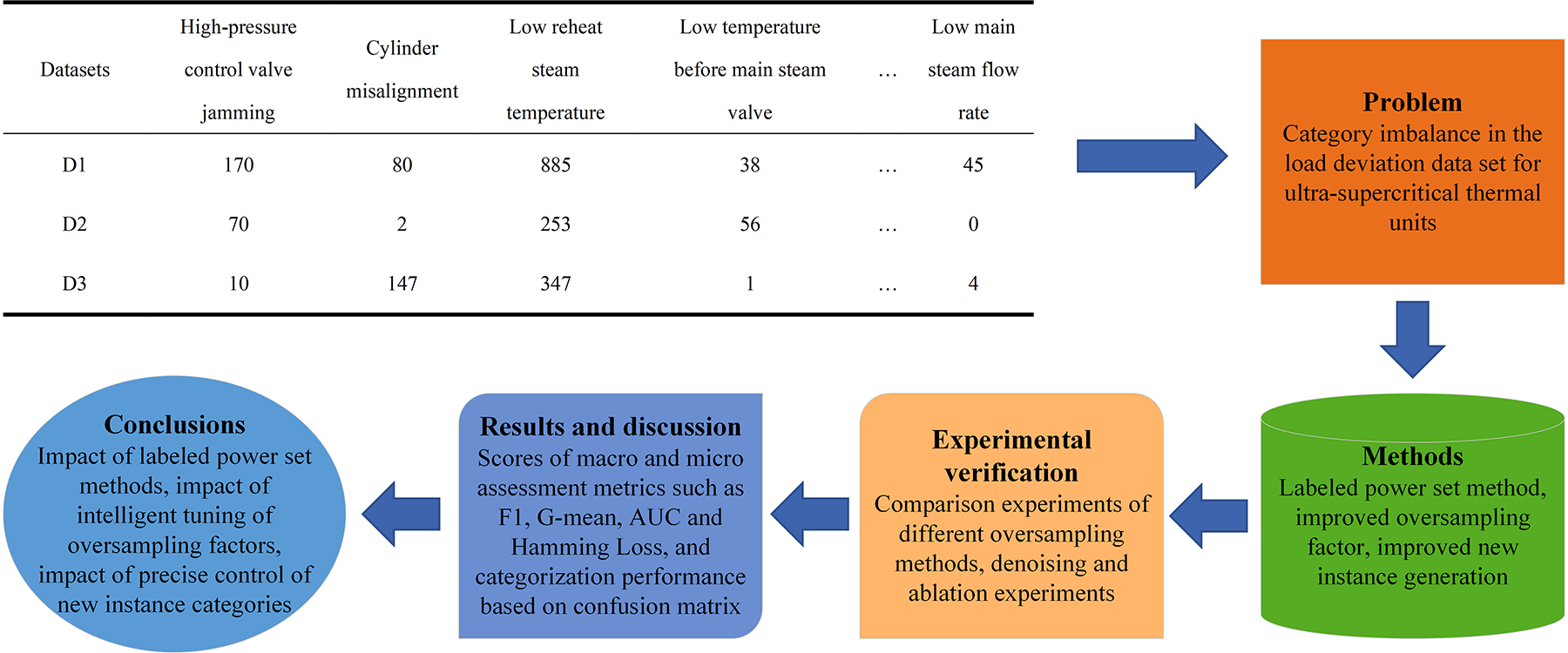 Open Access
Open Access
ARTICLE
Diagnostic Method for Load Deviation in Ultra-Supercritical Units Based on MLNaNBDOS
1 School of Energy and Power Engineering, Changsha University of Science & Technology, Changsha, 410114, China
2 School of Science and Engineering, The Chinese University of Hong Kong, Shenzhen, 518000, China
* Corresponding Author: Hao Yu. Email:
(This article belongs to the Special Issue: Modeling, Control, and Optimization of Energy Modules and Systems)
Frontiers in Heat and Mass Transfer 2025, 23(1), 95-129. https://doi.org/10.32604/fhmt.2025.061143
Received 18 November 2024; Accepted 02 January 2025; Issue published 26 February 2025
Abstract
Load deviations between the output of ultra-supercritical (USC) coal-fired power units and automatic generation control (AGC) commands can adversely affect the safe and stable operation of these units and grid load dispatching. Data-driven diagnostic methods often fail to account for the imbalanced distribution of data samples, leading to reduced classification performance in diagnosing load deviations in USC units. To address the class imbalance issue in USC load deviation datasets, this study proposes a diagnostic method based on the multi-label natural neighbor boundary oversampling technique (MLNaNBDOS). The method is articulated in three phases. Initially, the traditional binary oversampling strategy is improved by constructing a binary multi-label relationship for the load deviations in coal-fired units. Subsequently, an adaptive adjustment of the oversampling factor is implemented to determine the oversampling weight for each sample class. Finally, the generation of new instances is refined by dynamically evaluating the similarity between new cases and natural neighbors through a random factor, ensuring precise control over the instance generation process. In comparisons with nine benchmark methods across three imbalanced USC load deviation datasets, the proposed method demonstrates superior performance on several key evaluation metrics, including Micro-F1, Micro-G-mean, and Hamming Loss, with average values of 0.8497, 0.9150, and 0.1503, respectively. These results substantiate the effectiveness of the proposed method in accurately diagnosing the sources of load deviations in USC units.Graphic Abstract

Keywords
Cite This Article
 Copyright © 2025 The Author(s). Published by Tech Science Press.
Copyright © 2025 The Author(s). Published by Tech Science Press.This work is licensed under a Creative Commons Attribution 4.0 International License , which permits unrestricted use, distribution, and reproduction in any medium, provided the original work is properly cited.


 Submit a Paper
Submit a Paper Propose a Special lssue
Propose a Special lssue View Full Text
View Full Text Download PDF
Download PDF Downloads
Downloads
 Citation Tools
Citation Tools
